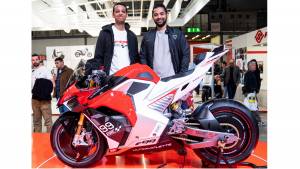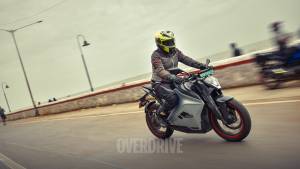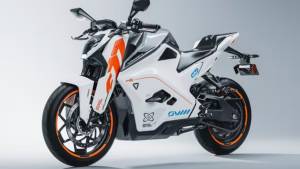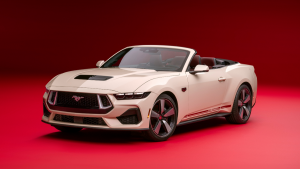Ultraviolette F77 - First Ride Review
It is that time of the automotive world's transition phase where promising technologies and technologies promising breakthroughs in alternative propulsion are cropping up in every nook and corner of the world. Amidst this transition, EV start-ups are a dime a dozen - from college projects to serious players - everyone has joined the bandwagon. One of the names that has been trending lately in this scenario, is Ultraviolette. It is a start-up from Bengaluru, made up of professionals who are passionate about two-wheelers. So that is a good start. But is the passion enough to create a convincing motorcycle that deserves your attention? Not at all. It takes a lot more to convince the traditional motorcyclist to invest trust in a machine that is so different in nature. So to find out if Ultraviolette's project is any good, we flew to the Madras Motor Race Track to swing a leg over a pre-production prototype of their first motorcycle - the F77.
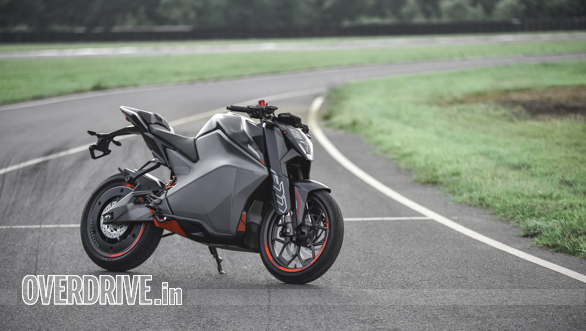
The name is inspired from the world of fighter jets and has been chosen so because this motorcycle rates sport riding performance higher than outright range. That is also one of the reasons why the MMRT was chosen to let the prototype loose. With quite a few riders set to ride the bike before us, there was a bit of an anxiety in my mind - would the prototype last the distance? Do they have enough batteries? What if some one has a spill? Unsurprisingly, I could see the same anxiousness on the faces of the boys who have built this machine too.
Fortunately for us, we got our hands on a fully-charged F77 in its matte-grey paint job. Ultraviolette has named this variant, the Shadow, which is mechanically similar to the other two variants - Lighting and Laser - but it's the paint and a few accessories that differentiate the three. The significant bits on our test bike comprised of Pirelli Super Corsa tyres and Brembo 15 RCS master cylinder kit for the front brakes.
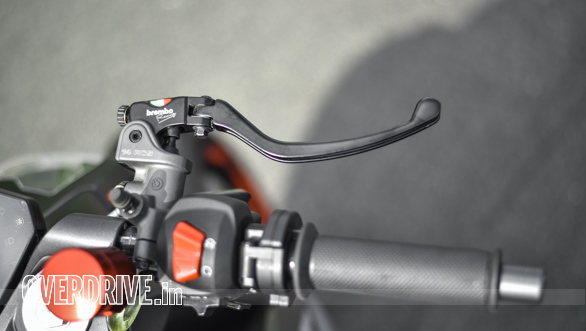
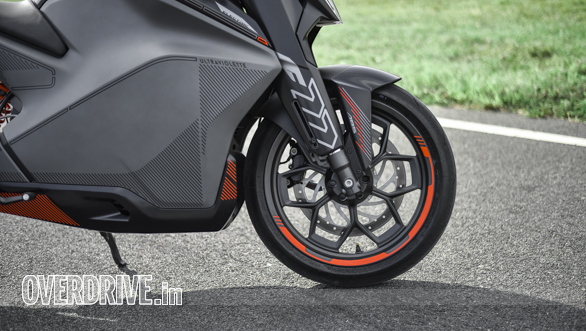
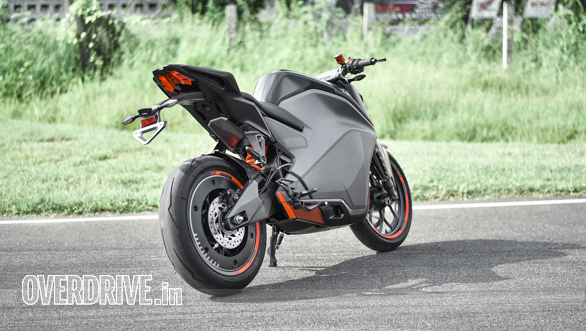
The F77 comes to life in a very undramatic manner - twist the key, toggle the kill switch to its on position and twist the throttle to roll. After all, this is an EV and there is no dramatic exhaust note like a conventional motorcycle. It is a bit of a dampener, of course, but the F77 makes up for the lack of these start-up theatrics with the kind of on-board sound that we have never heard on a motorcycle before. The kind of sonic whine that jet engines emit! The only motorcycle sound that comes to mind after hearing the F77 is the sound of the turbine-powered Y2K. The Y2K was a lot louder and spine chilling, of course, but many of us haven't had the privilege to even listen to one at close quarters, let alone experiencing it under our butt. If the function of a motorcycle's sound is to evoke emotion and add a dramatic soundtrack to the ride, well, the F77 does it in its own unique style. That sound amplifies naturally as the motor spools up.
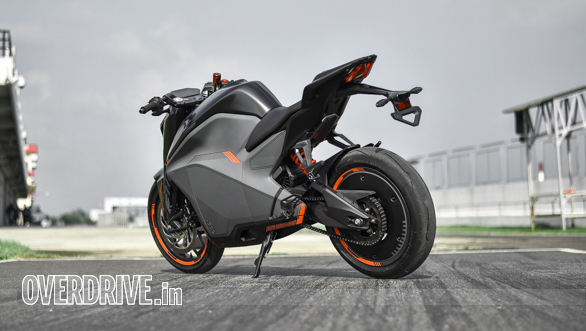
The F77's electric motor is of 25kW capacity that is good for a 33.5PS of power and 90Nm of torque. That's more torque than an average hatchback, or in motorcycle terms - more twist than a KTM 790 Duke! You will read more KTM references as we progress further through the review. In typical electric vehicle fashion, the crazy is available from the word go! On the production motorcycle, there will be three riding modes to ensure that the torque delivery is altered to suit your skill and comfort. These will comprise an Eco, Sport or Insane modes (yes, you read that right), but we couldn't test these on the prototype.
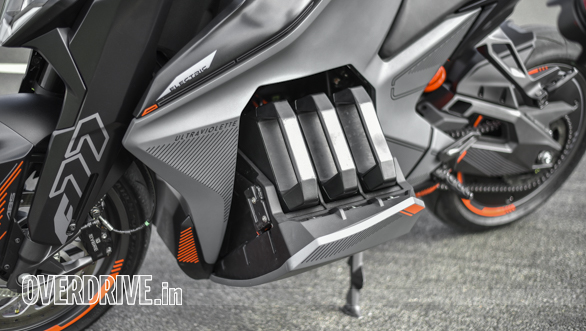
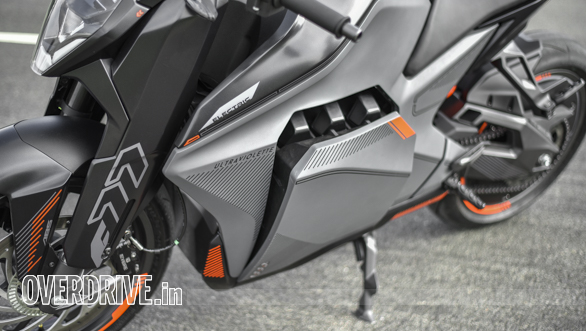
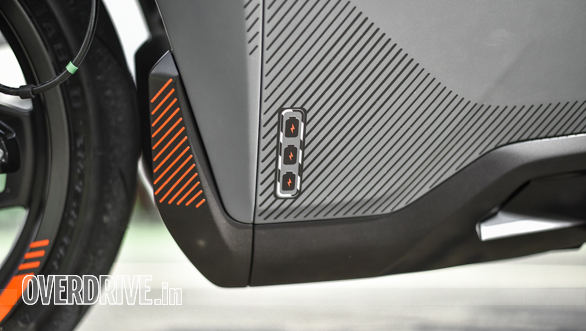
Power to the motor comes from a 4.2kWh battery pack consisting of three lithium-ion batteries which are removable for convenient charging at home. Each weighs about 8.5kg and you might need to carry a few extra ones for track sessions like these. Will you want to lug that extra weight around? Probably not, but that is also a matter of debate. Ultraviolette claims to have seven international patents for these batteries and these include the battery design, it's density, the casing etc. Each battery has IP67 water-proof connectors, a shock-proof casing and LTE capability to connect and store rider usage data to the cloud, so that the maker can monitor the health and safety of the powertrain.
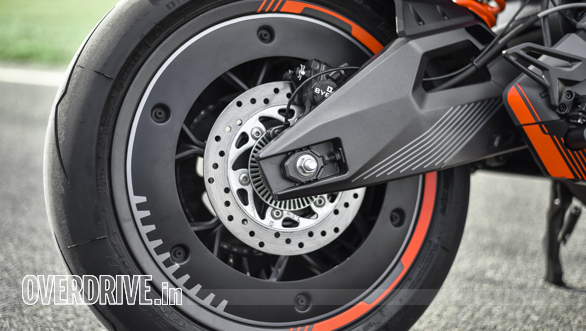
The entire powertrain weighs about 45 kilos. To put things into perspective, the engine block of a KTM 390 weighs around 40 kilos - from that point of view, the F77 doesn't feel very different when changing directions and feels quite natural despite the visually heavy belly that it has got.
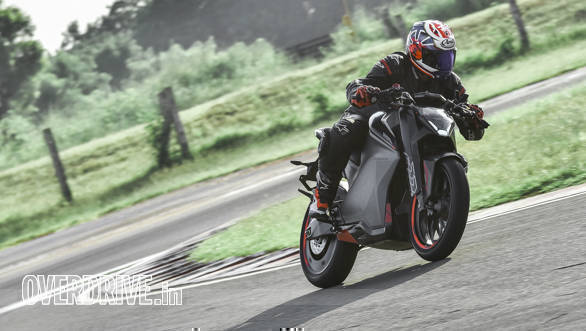
The bike can theoretically function with just one battery on board too, but to ensure the claimed performance of the F77, you will need a minimum of two batteries installed. A depleting battery pack doesn't seem to impact performance but during our ride, the F77 seemed to halve the range of the batteries in about five laps of the MMRT, which will necessitate having extra batteries and planning the fast charging cycles between the track sessions. Ultraviolette says that the fast charger will replenish the juice in 1.5 hours, or will take up to 5 hours on the standard charger.
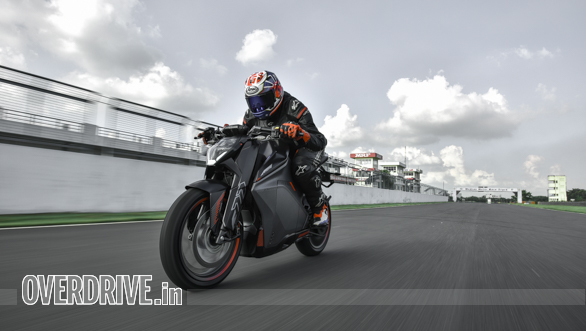
Speaking of the performance, the F77 claims to go from standstill to 100kmph in 7.5s, although it does feel quicker off the line as the torque delivery is instantaneous. The claimed top speed is about 147kmph and the maximum that I glanced on the speedo was about 124kmph on the back straight of the MMRT. The power delivery is linear and quick, but not overwhelming. Keeping a steady throttle mid-corner is easy and smooth and you can get on the power just a tad bit early than the conventional 250s and not worry about gearshifts or being in the wrong gear. It is almost like riding a twist and go scooter, only quicker and with better weight distribution. The weight bias is a 49:51, but the committed riding posture ensures that the front doesn't feel too light while tipping into a corner.
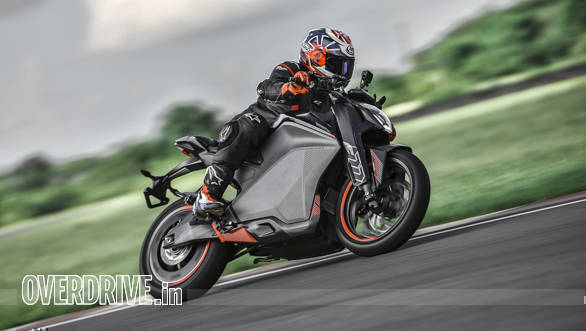
The F77 also features regenerative braking, but unlike what we have seen in electric cars where the brake pedal first initiates the regenerative function and engages the physical brakes later, the F77's motor and the brakes function independently of each other. The regenerative braking kicks in the moment you close the throttle and its level of deceleration is fully customisable.
On our test bike, the level was preset to 8% of the peak torque - which UV says is closer to conventional engine braking. It does feel 'normal' under deceleration, without pronounced nose dives or choppy braking whatsoever. The feel of the disc brakes was progressive too, even with the ABS turned off.
The Pirelli Super Corsa added another layer of confidence to the dynamics, but the agility of the F77 is more a function of its well-balanced chassis than the choice of rubber. The F77 is sharp to turn into corners and feels like a nimbler KTM RC, sans the vibrations. After all, its chassis foundations are derived from the KTM RC and the balance is comparable.
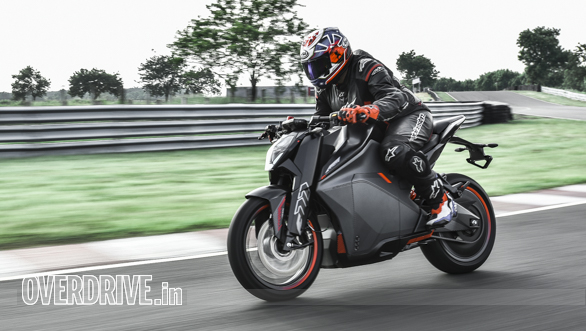
The chassis did need modifications, of course. So while the rake and trail angles and the wheelbase are identical to the RC, the chassis has two down tubes that house the batteries and the motor. The seat height is lower than the KTMs at 800mm, and the rider triangle for my height of 5 feet 8 is pretty comfortable. The charging system sits in place of the conventional fuel tank, and it has the widely accepted Type 2 port under what looks like a fuel filler cap. Given the compact nature of this chassis, there is no onboard storage space for the charging equipment, meaning you have to carry the fast charger in a backpack - unless you want to pick up a set of panniers listed in F77's accessory list.
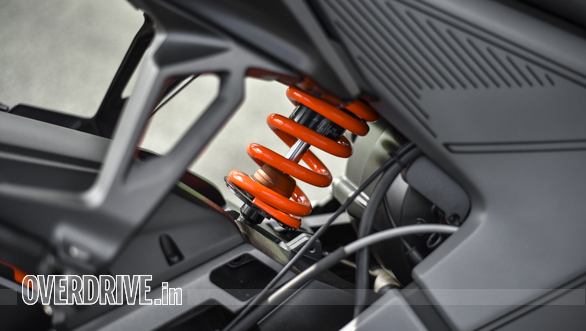
Our riding session was too short to evaluate the suspension setup, but I would go with a slightly stiffer rear. The KTM foundations will certainly open up plenty of aftermarket options. The powertrain hides behind a fairing, which also channels air to the powertrain for a simple cooling mechanism. But given our short ride on the MMRT, it's hard to tell how effective the cooling will be in the real world.
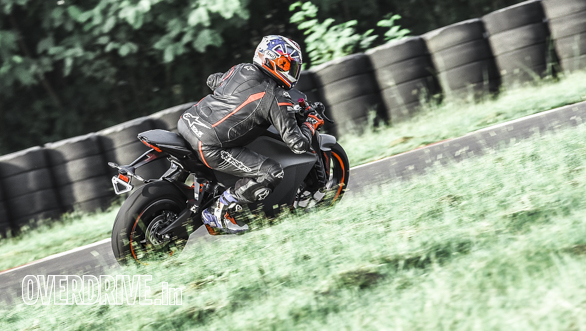
What certainly has me worried, however, is the safety of the powertrain in case of a low-side. Will it damage the housing mechanism, the batteries etc? Where do the frame sliders go? An external cage would look outright ugly on a good looking design like this one. And that's where I think that a street naked design like the Duke would probably have made more sense than the half-naked RC design that the F77 currently wears.
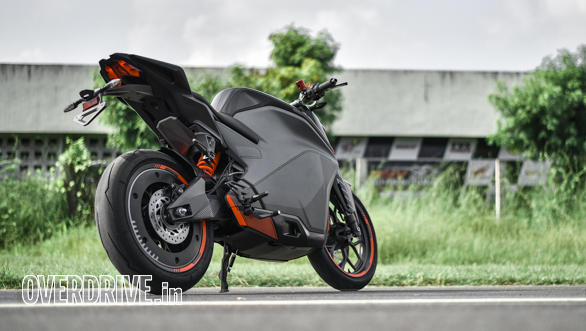
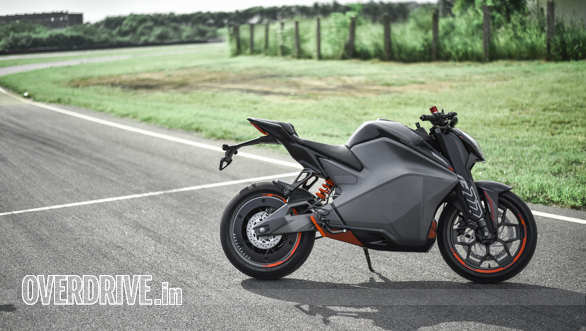
The bodywork itself looks quite nice and I particularly like the beefy front end. On this prototype, the fit and finish are largely well-executed, with a few flimsy bits here and there, and I hope it will be fixed going forward. Reliability of the components is too early to comment on, but now that the engineering bit is pretty much sorted, reliability and longevity are going to be Ultraviolette's biggest challenges.
On our prototype test, the display wouldn't turn off, the brakes weren't wired to the ABS, ride mode and regenerative braking couldn't be customised and there was no switchgear to control the instrumentation. But I believe these are teething issues and I hope to test a fully functional production motorcycle before deliveries begin for the F77 in October 2020. To me, the F77 is an interesting buy as a second or a third bike in your garage. It is a good sampler of the direction that electrified motorcycles could take in the coming years.
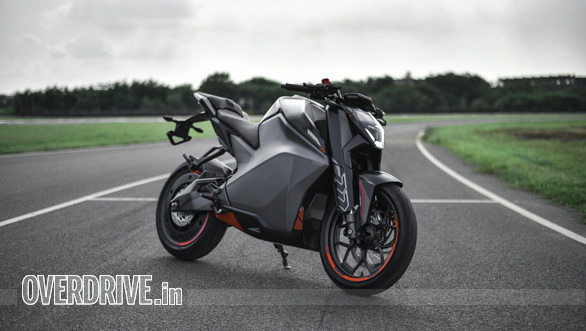
I'm pretty impressed with what the F77 promises on the engineering front and I hope that Ultraviolette can back it all up with the required service, spares, dealer and charging network. Time will tell. As for the question of whether you should consider one of these or is it too early to go for an EV - I think it certainly deserves your attention if you love automobiles. Yes, it could have done with a better range, at least 200kms, especially when motorcycles are known to have a longer range than cars, and yes, apart of its driving dynamics it does feel quite different than the motorcycles we know. But I think It is a very interesting package and so far, one of the more convincing experiments in indigenous electric motorcycles, and being a part of this experiment will only make the future of motorcycling that much more fulfilling.
Also see: Ultraviolette F77 | First Ride
Starts Rs 0
-NA-
Automatic
34.00
90.00
-NA-
